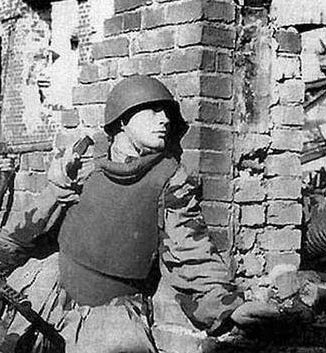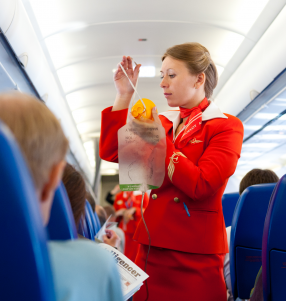
It’s one of those moments that’s haunted me for years. It was a Second World War story about army medics preparing for the invasion of France in 1944. Just prior to D-Day, some U.S. Army medics apparently saw assault soldiers being issued a new piece of equipment. Incorporating two-inch-square steel plates, and sewn into a canvas vest, the device would apparently protect the wearer against shrapnel and some bullet penetration. Today, police officers call it “body armour.” At any rate, the story goes that a D-Day medic asked the officer handing these things out, “What’s that?”
“Flak vest,” the officer said.
“What about giving it to us medics?”
“They’re for assault troops,” the officer said. “Besides, there’ll be so many casualties, you can have your pick of vests from the dead.”

Whether the story is true or not, I’ve been thinking about the ill-conceived logic of giving life-saving devices to armies of people, before giving them to some of those who need it most, the people on whom we depend for essential services every day.
Shouldn’t grocery cashiers, bank tellers, postal clerks, all PSWs (not just those personal support workers in long-term-care facilities), and ALL firefighters and police officers, for example, come before the average 60-year-old or 70-year-old who is not immunocompromised? And why are bus drivers and teachers so low on the priority ladder?
I think the federal and provincial governments have done a remarkable job getting vaccines to Indigenous communities quickly and efficiently. (If they could only use similar efficacy to deliver clean water, I’m sure that would ease a lot of minds among those living in remote locations across the North.) It seemed to me when both levels of government in Canada chose to assign military commanders the job of co-ordinating the vaccine rollout – Retired Gen. Rick Hillier and Maj.-Gen. Dany Fortin – that made a lot of sense.
They’re used to dealing with rapid deployment, large-scale logistical problem-solving and emergency decision-making. However, I don’t understand why Ontario’s CEO of vaccine rollout Gen. Hillier is leaving at the end of this month, just when vaccine rollout appears to need him most.
For the past few weeks, all we’ve heard is that the best vaccine is the first one that’s offered. One of the major problems of the rollout, I think, is the communication level. Everybody’s supposed to apply for an appointment – initially those 80 years old – online! Well, it doesn’t take me to tell the authorities, not all 80-year-olds have either the hardware, the internet access, or the savvy to do that. Heck, many of us a lot younger will readily admit we don’t have the savvy either.
The province and municipality should try to use traditional means of communication. If you can’t get the people to the jab, then get the jab to the people. Rotating pharmacy distribution at scattered locations across the province doesn’t seem particularly comprehensive. If we can help seniors get to voting booths, PSWs into homes for care, or meals to shut-ins, certainly there must be tried-and-true means of getting needles and vaccine to patients.
For as long as this pandemic has chased us into our homes with self-isolation or lockdown, the Ontario government has repeatedly claimed its highest priority are the kids. That’s all we’ve heard from the premier and education minister. “We’ve got to keep schools open! We’ve got to protect our most valuable.”
So then why can’t the folks at Queen’s Park see university, college, high-school and elementary school teachers on the list of those essential to meet that mandate? Does the Ford administration think they’re all immune? If our children are our most valuable, it seems to me the province should be busting its tail to protect the adults instructing the students. Giving teachers higher priority on the vaccine timetable makes more sense.
My wife has suggested to me an even more appropriate model for dispensing vaccines than the body-armour one I offered at the beginning of today’s column. We’ve all witnessed the travel scenario. You’re sitting in your seat aboard a passenger jet (remember them?)

And you receive the obligatory pre-flight instructions – read the safety-features card, note where emergency exits are located, buckle your seatbelt, how to find and put on your life jacket, and finally, how to deploy the oxygen masks.
“In the event of decompression, an oxygen mask will automatically appear in front of you…” the commentary goes. But it concludes with, “If you’re travelling with someone who requires assistance, secure your mask first, then help the other person.”
Shouldn’t front-liners in grocery stores, police stations, public transportation, as well as colleges, universities and schools get their shots now, so that they can keep their life-providing service flowing to us? If it works at 40,000 feet, it should probably work here on the ground.
Hello Ted
As of now I think you make some valid points about giving the priority to vaccinate the police, personal care workers, fire fighters, teachers, schools, bus drivers, postal clerks, bank tellers,grocery store clerks. I would add warehouse workers like Amazon.
Again it does not mean stop all senior homes , but if they can do a few that really need more help if there residence shows a growing seniors dying due to outbreak.
The Pandemic is now approximately 1 year 9 days . Retirement homes have strict rules and more of a plan since the early high death tolls. It is my first pandemic so I had to change my ways of living like everyone else! Wear a mask! Stay safe. Follow the guidelines in your area.
We all love our seniors in our family.
A few seniors in my family have their shots done and no issues! They love their senior residence ( hamilton) and feel they have done an outstanding job of containing the virus during the pandemic! Nothing but positive comments.
Karen Walton